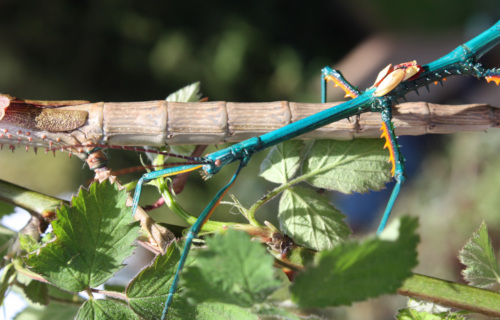
CCL: https://bit.ly/2R90J3U
4 Stupendous Stick Insects
We sincerely hope that you enjoy this article about 4 Stupendous Stick Insects. These magnificent invertebrates represent some of the most distinctive members of the insect world. Not surprisingly, they also come in a wide variety of appearances. They have taken camouflage to the next level, and form true masters of the principle. We hope that reading of these few examples make you want more.
Lord Howe Island Stick Insect
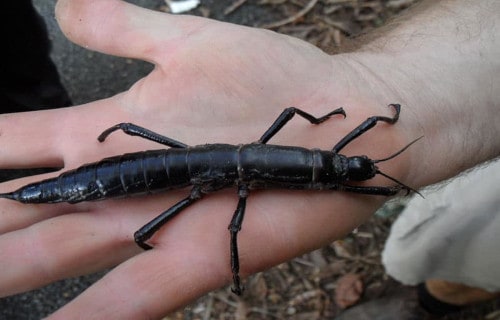
CCL: http://bit.ly/2IjEG4n
Lord Howe Island Stick Insect Facts
- The first entry into this article about 4 Stupendous Stick Insects is perhaps the king of them all, the Lord Howe Island Stick Insect.
- Perhaps most notably, this incredibly amazing stick insect represents a true marvel to researchers. It’s also often known by the alternate, and somewhat appropriate, common name of the tree lobster. However, its true scientific name, used among entomologists, is Dryococelus australis.
- The reason many researchers consider the species to be a legitimate marvel is an understandable one. This state of amazement occurs due to the fact that the amazing invertebrate was thought to be extinct for more than 80 years. In point of fact, its accidental rediscovery occurred in the year 2001.
- Furthermore, this incredible marvel of Nature currently ranks as the rarest known insect on earth. That holds true due to the fact that only 24 known individual specimens still exist in the wild. However, several thousand individuals have now been bred in captivity, to aid in preserving the species. Truly, it deserves this listing as one of the 4 Stupendous Stick Insects.
- Rather understandably, the IUCN currently lists this remarkable creature as Critically Endangered. Lastly, this amazing insect exists in only one small known location. Therefore, its primary threats naturally consist of habitat loss and the ongoing effects of climate change.
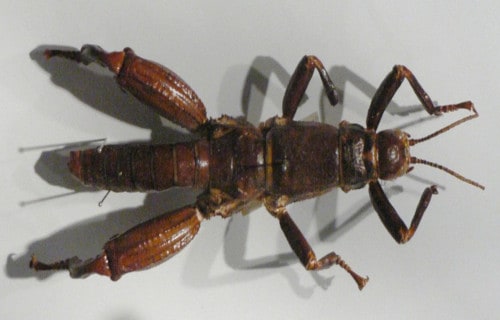
CCL: http://bit.ly/2xLZ0ap
Lord Howe Island Stick Insect Physical Description
The breathtaking Lord Howe Stick Insect also stands out from related species for its sheer size. That’s because the marvelous arthropod has the ability to grow to a maximum known length of about 8 in (20 cm). However, the remarkable species also displays a moderate degree of sexual dimorphism. In the case of this impressive insect, this displays itself in the fact that females average about 20% smaller than males.
Individual specimens of the amazing stick insect have a rather elongated, sturdy shape. The larger males also tend to have thicker thighs than females. Unlike most related species, however, this creature possesses no wings but does have the ability to run rather quickly along the ground. Colors also vary between individuals, without regard to gender. Most notably, these include various shades of black, brown, and reddish.
- Kingdom: Animals
- Phylum: Arthropoda
- Class: Insecta
- Order: Phasmatodea
- Family: Phasmatidae
- Genus: Dryococelus
- Species: D. australis
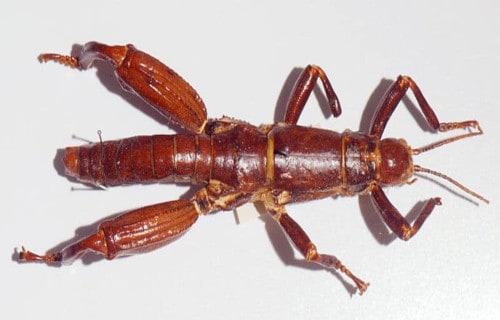
CCL: http://bit.ly/2P4R3Ic
Lord Howe Island Stick Insect Distribution, Habitat, and Ecology
Most notably, the truly mesmerizing Lord Howe Island Stick Insect currently only lives in the wild in one tiny spot in the entire world. In point of fact, the only known wild population of the invertebrate appears on just one small island. That location is the tiny chunk of rock named Ball’s Pyramid.
Furthermore, this extraordinarily inhospitable location lies roughly between the continent of Australia and the island of New Zealand. This location actually consists of little more than steep volcanic rock. In addition, it’s inhabited by only a few very small shrubs, and one tiny colony of this insect.
As a result, the entire surviving population of the Lord Howe Island Stick Insect literally lives under one such small bush. But, it also holds one more secret to amaze researchers. Uniquely, and perhaps fortuitously, the females also have the ability to reproduce through the process of parthenogenesis.
Goliath Stick Insect
Goliath Stick Insect Facts
- Next up among our choices for inclusion in this compendium of 4 Stupendous Stick Insects is the aptly named Goliath Stick Insect.
- Most notably, this truly remarkable stick Insect bears a common name that’s completely appropriate for it. The magnificent insect also bears the somewhat cumbersome scientific name of Eurycnema goliath. But by either name, it presently ranks as the second largest known variety of stick insect in its entire region of the globe.
- Furthermore, the awesomeness of this particular invertebrate does not end there. That’s because its comparatively immense size earns it yet another distinction. In point of fact, this surprisingly lovely invertebrate holds a special place in the record books. That occurs because it’s one of the largest known insects of its type in the entire world.
- Regrettably, however, this fascinating creature also inhabits a rather restricted range of natural habitation. Yet despite its minimal habitat range, its population appears to be relatively stable, For that reason, the IUCN currently lists it as a species of Least Concern. Nevertheless, it doubtless remains at risk from the ongoing effects of climate change.
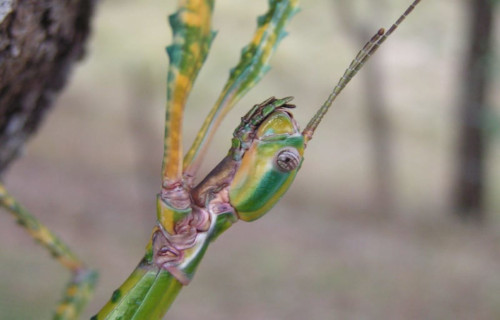
CCL: http://bit.ly/2JszWtl
Goliath Stick Insect Physical Description
Firstly, the Goliath Stick Insect truly represents a quite remarkable physical insect species. This comparison especially holds true when compared to the majority of related species. However, it does share many traits with its relatives. For one, like many arthropods, the species displays a moderate degree of sexual dimorphism.
Secondly, in its case, the females of the amazing species typically remain the larger of the genders. In point of fact, these grow quite large, sometimes reaching a measured length of as much as 9.8 in (25 cm). Meanwhile, the males of the species generally attain a somewhat smaller physical size than their female counterparts.
In color, both genders of the Goliath Stick Insect appear the same. Green remains the primary color. Yet combinations of purple, blue, gold, yellow, and red appear on the underside of the large wings. Although both sexes possess wings, typically only the male has the ability to fly. His body also grows slimmer and lighter than that of the larger female.
- Kingdom: Animalia
- Phylum: Arthropoda
- Class: Insecta
- Order: Phasmatodea
- Family: Phasmatidae
- Genus: Eurycnema
- Species: E. goliath
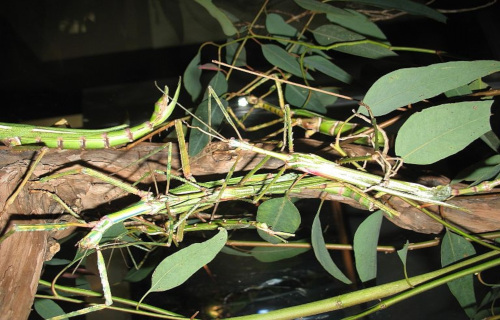
CCL: https://bit.ly/2x3J1HF
Goliath Stick Insect Distribution, Habitat, and Ecology
Quite sadly, the astonishing Goliath Stick Insect presently inhabits a greatly restricted section of the earth. That’s because the massive arthropod apparently remains endemic to only a relatively small portion of the continent of Australia. This range of habitation consists of only the region along the coast, around Queensland, as well as somewhat further north, around Cairns.
While its range may be very small compared to other similar insects, the fascinating arthropod does have one evolutionary advantage. That’s because the amazing creature appears to be extremely adaptable and flexible in its habitat. It primarily inhabits areas of either forest or shrubland, due to the natural camouflage this type of habitat provides, given its natural coloring.
The remarkable Goliath Stick Insect also appears to have a strong preference for certain flora. That’s due to the fact that it seems to be particularly fond of residing in or near eucalyptus trees and some flowers, such as acacias. Its camouflage even extends to its eggs. These have the general appearance of small seeds, often prompting ants to take them into their nests.
Achrioptera manga

CCL: https://bit.ly/2R90J3U
Achrioptera manga Facts
- Placing third on this list of 4 Stupendous Stick Insects, though only due to random selection, comes the awesome Achrioptera manga.
- First of all, the amazing invertebrate with the complex scientific name has no common name as of this time. This occurs due to the fact that the fascinating invertebrate represents a completely newly recognized species. Furthermore, scientists first collected specimens of the truly stunning creature as early as the year 2007. However, at that time scientists misidentified it as a member of another, visually similar species.
- In addition, this species, along with another recently identified one, remains collectively referred to as Malagasy Giant Stick Insects. The other, closely related species, remains quite similar in terms of physical appearance. Both species, in the genus Achrioptera, share a trait highly unusual among stick insects. That’s because very few stick insects display bright colors, usually showing colors that provide protective camouflage.
- At this time, the IUCN has no listing for this remarkable insect. This holds true simply due to a lack of sufficient information about the species. However, given its limited territorial range, further evaluation may determine a status reflective of a species in danger. It also faces other potential threats to its existence. Like many species, especially those with restricted ranges, these include climate change and habitat loss.
Achrioptera manga Physical Description
Firstly, the stunning Achrioptera manga represents an especially large variety of stick insect. Secondly, however, much like many other invertebrates, this species displays a marked degree of sexual dimorphism. In its case, the females attain a significantly larger size than their male counterparts.
This holds true due to the fact that the highly robust females reach an average body length of roughly 7.9 -9.1 in (20 – 23 cm). Meanwhile, the males only grow to about 5.2 – 5.7 in (13 – 14.5 cm). Furthermore, the shorter males also display a significantly slimmer body structure than the females.
Yet, both genders display a number of sharp spines on the legs and thorax. However, the males typically also possess these spines on the head, while among females these occur only sporadically. In addition, both genders of this species display bright red hindwings. Both also have rather small eyes, compared to related creatures.
But the arthropod also displays another quite striking example of sexual dimorphism, as well. This occurs in the way of natural coloring. The females present a mostly light to dark brown, with only a few spots of bright colors. Yet the male displays a bright turquoise blue color over much of its body, in addition to the patches of other colors elsewhere.
- Kingdom: Animalia
- Phylum: Arthropoda
- Class: Insecta
- Order: Phasmatodea
- Family: Phasmatidae
- Genus: Achrioptera
- Species: A. manga
Achrioptera manga Distribution, Habitat, and Ecology
Quite regrettably, but not at all surprisingly, the gorgeous Achrioptera manga has an extremely limited habitat range. This holds true because of the fact that, to date, its only known habitat consists of a single forest. Furthermore, this lone location also sits in an especially remote section of the island country of Madagascar, located quite near Africa.
Both genders of this arthropod remain primarily active during the day, including the newly hatched nymphs. However, for reasons that currently remain undetermined, this holds especially true for adult males. Additionally, individuals tend to move about far more frequently during windy periods. The reason for this also remains undetermined at this time.
Like other known types of stick insect, the Achrioptera manga has an entirely herbivorous diet. In its case, adults and nymphs alike feed on a wide variety of local plants. But, certain varieties appear to be preferred. This primarily includes salal, bramble, eucalyptus, oak, and raspberry. In yet another minor mystery, adult females appear to prefer drier foliage to fresh.
The insect also displays yet another deviation from patterns normal for stick insects. In this species, mating occur frequently, and at anytime of the year. But, after mating, the male remains with the female for no more than a few days. Following the laying of the eggs, the female actually throws the eggs from her, into the surrounding foliage. Incubation lasts 4 – 5 months, while adults rarely live more than a few months.
Giant Prickly Stick Insect
Giant Prickly Stick Insect Facts
- The fourth and final of our 4 Stupendous Stick Insects is the breathtaking species known as the Giant Prickly Stick Insect.
- Quite sadly, the Giant Prickly Stick Insect currently inhabits only a restricted habitat range. Yet the remarkable insect has one factor working in its favor. That’s because it reproduces prolifically. Therefore, the IUCN presently lists lists it as a Species of Least Concern.
- Moreover, these truly remarkable insects developed several unique defensive measures. First of all, an individual stands on its front and middle legs when it feels threatened. Thereafter, the threatened individual points its abdomen, attempting to imitate the actions of a scorpion.
- In addition, the fascinating species developed an impressive learned behavior. That’s due to the fact that many specimens often move from side to side when sitting on a branch. In this manner, it mimics the motion of a twig, moving in the breeze. This serves to enhance its natural camouflage.
- Finally, even the eggs of the Giant Prickly Stick Insect possess defenses. Many ants find the outer covering of the eggs edible, so take them to their nest. The ants consume the outer covering, and discard the eggs themselves as trash. Therefore, the eggs later hatch, safely away from predators. Truly, it earns being one of our 4 Stupendous Stick Insects.
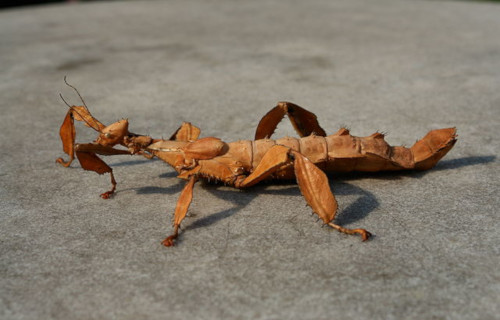
CCL: https://bit.ly/2xUThlt
Giant Prickly Stick Insect Physical Description
As the common name implies, the Giant Prickly Stick Insect attains a large size for a stick insect. Yet the invertebrate displays a marked degree of sexual dimorphism. This must be taken into consideration. Females reach lengths of as much as 8 in (20 cm). Meanwhile, the smaller males only reach 4 in (10 cm).
While females reach greater lengths, they also have thicker bodies. Due to this, their wings remain too small for flying. However, the smaller males still retain the ability to fly. In addition, the colors vary significantly between individuals. But, these most commonly include shades of grown, green, red, white, and cream.
Yet the numerous spikes covering their bodies remain their most distinctive feature. These cover the entire body of the female, while only grow around the faces of the males. The amazing Giant Prickly Stick Insect also produces a chemical spray to repel assailants. Coincidentally, this smells like toffee to most humans.
- Kingdom: Animalia
- Phylum: Arthropoda
- Class: Insecta
- Order: Phasmatodea
- Family: Phasmatidae
- Genus: Extatosoma
- Species: E. tiaratum
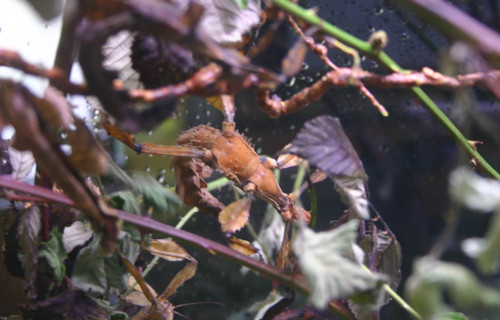
CCL: https://bit.ly/2XbSYxi
Giant Prickly Stick Insect Distribution, Habitat, and Ecology
Perhaps most importantly, numerous experts consider one of the most noteworthy things about the Giant Prickly Stick Insect to be its restricted distribution. This surprising status holds true due to the fact that the species only endemically inhabits extremely limited portions of Queensland and New South Wales, on the continent of Australia. It exists in no other known locations.
Furthermore, this truly remarkable creature also remains highly selective regarding its choice of its habitat. As a result, even within its limited range, the invertebrate only appears in certain specific types of habitat. That fact stands as true because the arthropod most commonly inhabits regions of dense foliage. This type of environment serves to augment its natural camouflage.
Furthermore, this herbivorous species primarily feeds on eucalyptus, yet will consume other plants when necessary. In addition, its reproductive methods remain especially relevant, as well as unusual. While females typically reproduce sexually, they also have the ability to reproduce through parthenogenesis. Females also actually toss the eggs onto the forest floor after being laid.
4 Stupendous Stick Insects
We sincerely hope that you have enjoyed this article about 4 Stupendous Stick Insects. These amazing creatures inhabit various parts of the globe, but amaze us wherever they appear. Sadly, however, many of these fabulous insects now find themselves in great danger. It remains up to us to do all that we can to preserve these 4 Stupendous Stick Insects, and others, for our posterity.
Check out our other articles on 7 Highly Unusual Lakes, 5 Incredible South American Islands, 7 Bizarre Ocean Invertebrates, Earth’s Many Astounding Beetles, 8 Truly Monumental Orchids
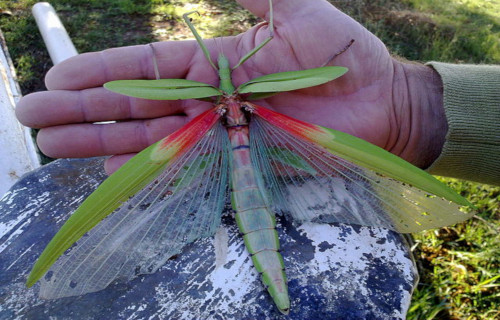
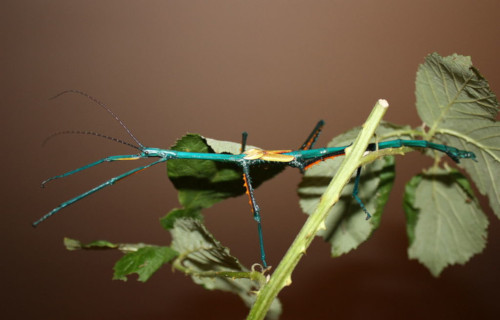
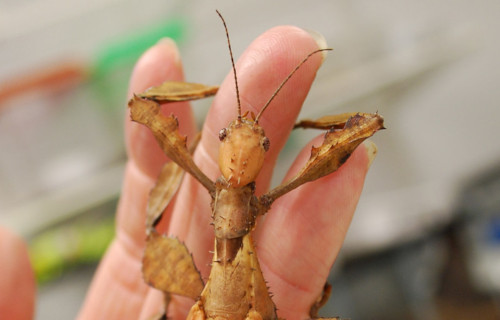









Leave a Reply